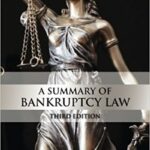
Bankruptcy’s avoiding powers often turn otherwise unexceptional transfers on their heads.
But who expected that an unsuspecting business would have to disgorge nine years of honestly earned payments because the customer paid with a check on his LLC?
Welcome to the 9th Circuit’s decision in Walldesign.
Paid with someone else’s money
For nearly a decade, Ms. Henry provided design and construction-related services for a building owned by Mr. Bello at her standard rates, in arms’ length transactions.
Aside from their commercial dealings, she had no ongoing relationship with Bello, his family, or any of his businesses.
He spent over $230,000 on Ms. Henry’s design services and paid for them using checks from businesses he operated, one of which was called Walldesign.
What Ms. Henry didn’t know was that the payments from Walldesign came from a secret Walldesign bank account Bello used to siphon money from Walldesign to support his lavish lifestyle.
When Walldesign filed for bankruptcy, the creditors’ committee sued Ms. Henry to recover all of the money she was paid for her work as fraudulent transfers.
And the third court to hear the case held that the payments were fraudulent as to the debtor, since Bello got the benefits, and Ms. Henry didn’t get the good faith defense of Bankruptcy Code 550(b)(1).
Can she get to the safe harbor
At trial in the bankruptcy court, the court held that the Committee could only recover the fraudulently transferred funds solely from the corporate cheat (Bello), and not from Ms. Henry, because Ms. Henry was a subsequent transferee who accepted these payments for value, in good faith, and without any knowledge of their voidability. (See 11 U.S.C. §550(b)(1) (the “safe-harbor” provision)).
Seems like a logical and equitable result for a court of equity like the bankruptcy court.
But wait. The Committee appealed and the District Court reversed, finding the Committee could recover the funds from both the corporate cheat and those parties to whom Bello first made payments from the secret Walldesign corporate account.
The Ninth Circuit affirmed, giving us one of the most inequitable bankruptcy outcomes in quite some time.
Who was the initial transferee?
At first, the Ninth Circuit correctly focused on the critical distinction between an initial and subsequent transferee, because trustees have an absolute right of recovery against the “initial transferee” and any “entity for whose benefit such transfer was made.”
And while trustees theoretically can also recover from subsequent transferees, those subsequent transferees who accepted the property “for value, in good faith, and without knowledge” of the voidability of the transfer are safe. § 550(b).
But then the Ninth Circuit found that although “transfer” is defined broadly in §101(54)(D), the definition was “misplaced in connection with the inquiry at hand: determining whether Ms. Henry qualified as an initial transferees under §550(a)(1)”.
Instead, the Ninth Circuit decided to use the Seventh Circuit’s approach in Bonded Fin. Servs., Inc. v. European Am. Bank, 838 F.2d 890, 894 (7th Cir. 1988), which found that treating anyone who touches the money as a transferee could lead to absurd results and require useless analytical steps.
To avoid this result, the court opted to use a more functional rule, where the minimum requirement for status as a transferee is dominion over the money or other asset, i.e., the right to put the money to one’s own purposes. This is known as the “dominion test.”
The keys to this test are “whether the recipient of funds has legal title to the and whether the recipient has the ability to use the funds as he sees fit.
The first party to establish dominion over the funds after they leave the transferor is the initial transferee; other transferees are subsequent transferees.
By adopting the harsher dominion test, the Ninth Circuit rejected the more lenient “control test,” which requires courts to “view the entire transaction as a whole to determine who truly had control of the money.”
Bello clearly would have been the initial transferee under the control test.
The Ninth Circuit opinion then explains how the majority of courts have dealt with cases involving the misappropriation of corporate funds by company directors, officers, or other insiders.
According to the Ninth Circuit, most courts use a “one-step transaction” analysis, where the principal of a debtor corporation who misappropriates company funds to satisfy personal obligations is not an initial transferee. These courts reason that “[t]he mere power of a principal to direct the allocation of corporate resources does not amount to legal dominion and control,” which is required for initial-transferee status. In re Video Depot, 127 F.3d at 1199 .
So, in a triumph of form over substance, the Ninth Circuit found “[s]imply directing a transfer, i.e., such as directing a debtor to transfer funds, is not enough.” A principal, therefore, may establish dominion “by first directing a transfer into his or her personal bank account and then making the payment from his personal account to the creditor.” See In re Video Depot, 127 F.3d at 1199.
But a principal does not establish dominion by misdirecting company funds directly to a third party for personal gain. In that situation, the principal is not a transferee at all but, rather, is the party for whose benefit the transfer was made. In re Global Prot., 546 B.R. at 624.
In reaching this decision, the Ninth Circuit considered and rejected two BAP decisions: Poonja v. Charles Schwab & Co. (In re Dominion Corp.), 199 B.R. 410, 415 (B.A.P. 9th Cir. 1996), and Ross v. John Mitchell, Inc. (In re Deitz), 94 B.R. 637, 642–43 (B.A.P. 9th Cir. 1988).
Dissenting, Judge Nguyen wrote that the result of the majority’s decision was not equitable. She wrote that the court should consider adopting the “control test” used by other circuits, or at least returning to a hybrid “dominion and control” approach. In addition, even applying the dominion test, Judge Nguyen believed the defendants were not initial transferees.
What this means in your world.
This decision adds additional risks to these “third-party” checks. So when in doubt, insist the payor, whether person or entity, is the actual receipient of your goods or services.
UPDATE – A petition has been filed for hearing en banc.

About the author. Guest author Wayne Silver represents clients in complex bankruptcy cases, bankruptcy crimes and high stakes business litigation. He’s not only a certified bankruptcy specialist, but the immediate past chairman of the California State Bar Bankruptcy Law Advisory Commission. To my delight, he’s a suite-mate at Moran Law Group. I’ll publish his writing here until I bully him into populating his own website.








We had a similar issue here in Idaho. A veterinarian has his little Inc. pay for everything (personal living expenses, personal debts, gifts to family & friends, personal legal expenses – you name it, the Inc. paid for it) except the IRS. He died and his family caused the LLC to file chapter 7 – the trustee filed approximately 50 different 544 actions using the IRS’s 6-year look back period for fraudulent transfers. Per the court’s opinion in one of the adversaries, it was noted that the trustee could have used a 10-year look back period.
Definitely some scary stuff for anyone.
I must admit that the bankruptcy lawyer alexandria va has helped me secure my future financial planning. Thanks to a financial crisis, Nathan pushed me to take a good look at the “big picture” of my financial route. I truly appreciated his help in getting me back on track. He will forever be an invaluable asset as my legal financial counsel!